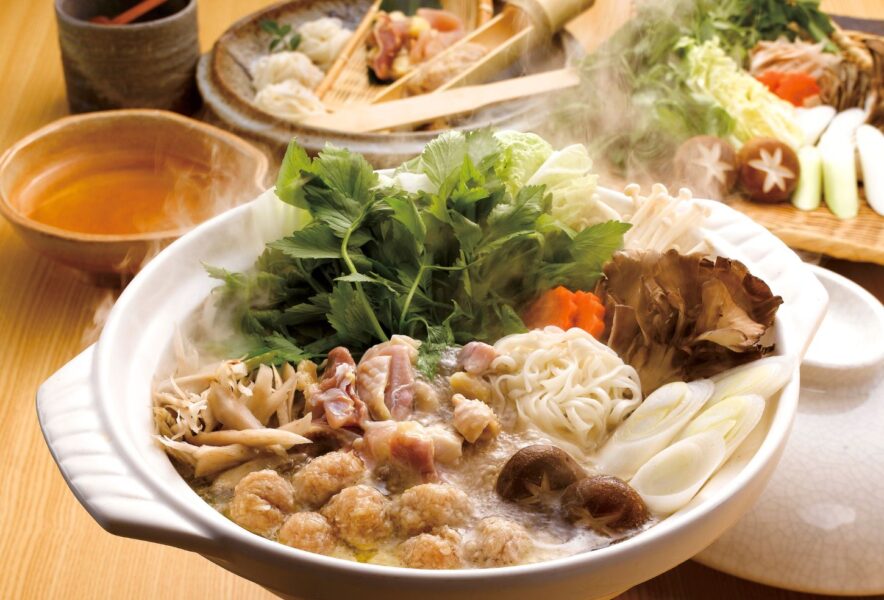What is Nabe? An Introduction to Japan’s Hot Pot Tradition
Nabe is a traditional Japanese hot pot dish that has been enjoyed for centuries. It is especially popular during the colder months, when family and friends gather around the table to share a hearty meal. Nabe is prepared by simmering a variety of ingredients, including meat, vegetables, tofu, and mushrooms, in a flavorful broth. While nabe is often cooked at home, many restaurants in Tokyo specialize in this dish, offering everything from classic styles to modern variations.
Popular Types of Nabe: Sukiyaki, Shabu-Shabu, and More
In Tokyo, you can enjoy a wide variety of nabe dishes. Here are some of the most popular types:
- Sukiyaki: A sweet and savory dish where beef, vegetables, and tofu are simmered in a soy-based sauce and dipped in raw egg before eating.
- Shabu-Shabu: Thinly sliced beef or pork is swirled in hot dashi broth and then dipped in ponzu or sesame sauce.
- Motsunabe: A rich and hearty dish made with beef or pork offal, simmered in a garlicky, spicy broth.
- Chanko Nabe: A protein-packed hot pot traditionally eaten by sumo wrestlers, filled with chicken, fish, and vegetables.
- Yosenabe: A simple yet flavorful hot pot made with a variety of seafood, meat, and vegetables, all simmered in a light broth.
Key Ingredients of Nabe: Vegetables, Meat, and Flavorful Broths
The ingredients used in nabe vary depending on the season, but here are some staples:
- Vegetables: Napa cabbage, leeks, and a variety of mushrooms like shiitake and shimeji are commonly used.
- Meat: Beef, pork, and chicken are the most common proteins, though fish and seafood are also popular in some nabe dishes.
- Tofu and Fish Balls: Tofu and tsukune (fish paste balls) add extra texture and flavor to the dish.
- Broth: The base of the nabe is the broth, often made with dashi (kelp stock) or chicken stock, and seasoned with miso, soy sauce, or other ingredients to create a rich, umami-packed flavor.
How to Enjoy Nabe: The Art of Japanese Hot Pot Dining
The beauty of nabe lies in its simplicity and communal nature. As the ingredients simmer in the broth, they soak up the flavors and release their own, creating a harmonious and flavorful experience. Diners can customize their experience by dipping the cooked ingredients into their choice of sauces, such as ponzu or sesame dressing. This interactive dining style fosters connection, making nabe a perfect dish for sharing with family and friends.
Recommended Nabe Restaurants in Tokyo: Traditional to Modern Spots
Here are some highly recommended nabe restaurants in Tokyo where you can enjoy authentic and delicious hot pot meals:
- Chanko Tomoegata Ryogoku: Located in Ryogoku, this restaurant offers traditional sumo-style chanko nabe in a rustic setting with both counter seating and private rooms.
Google Maps - Mizutaki Genkai: A long-established restaurant known for its mizutaki (chicken hot pot) served with rice, pickles, and tofu in a traditional tatami room setting.
Google Maps - Sakuranabe Nakaya: This historic restaurant is famous for its sakura nabe (horse meat hot pot), served in a beautifully preserved traditional building.
Google Maps - Isegen: A long-established restaurant specializing in monkfish hot pot, where you can enjoy the rich flavors of this unique dish in a traditional tatami setting.
Google Maps - Hakata Kamekichi: Enjoy Fukuoka specialties like motsunabe (offal hot pot) and mizutaki, made with fresh ingredients from Kyushu, in a cozy, late-night setting.
Google Maps
These restaurants offer a variety of nabe experiences, each with its own unique flavor and atmosphere. Be sure to visit one of these spots the next time you’re in Tokyo to enjoy an authentic nabe meal.

Comment